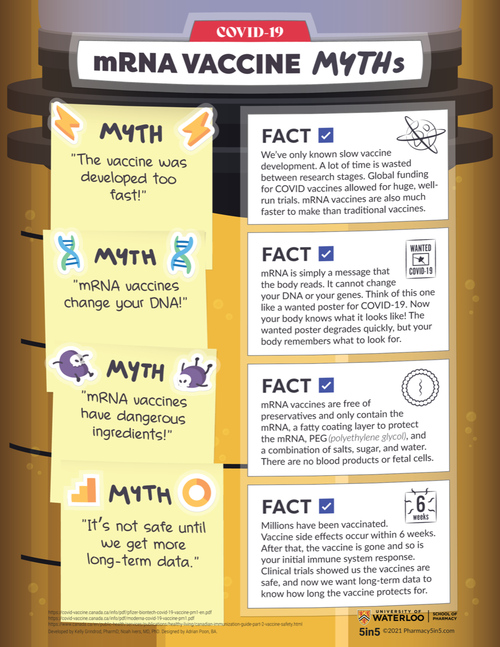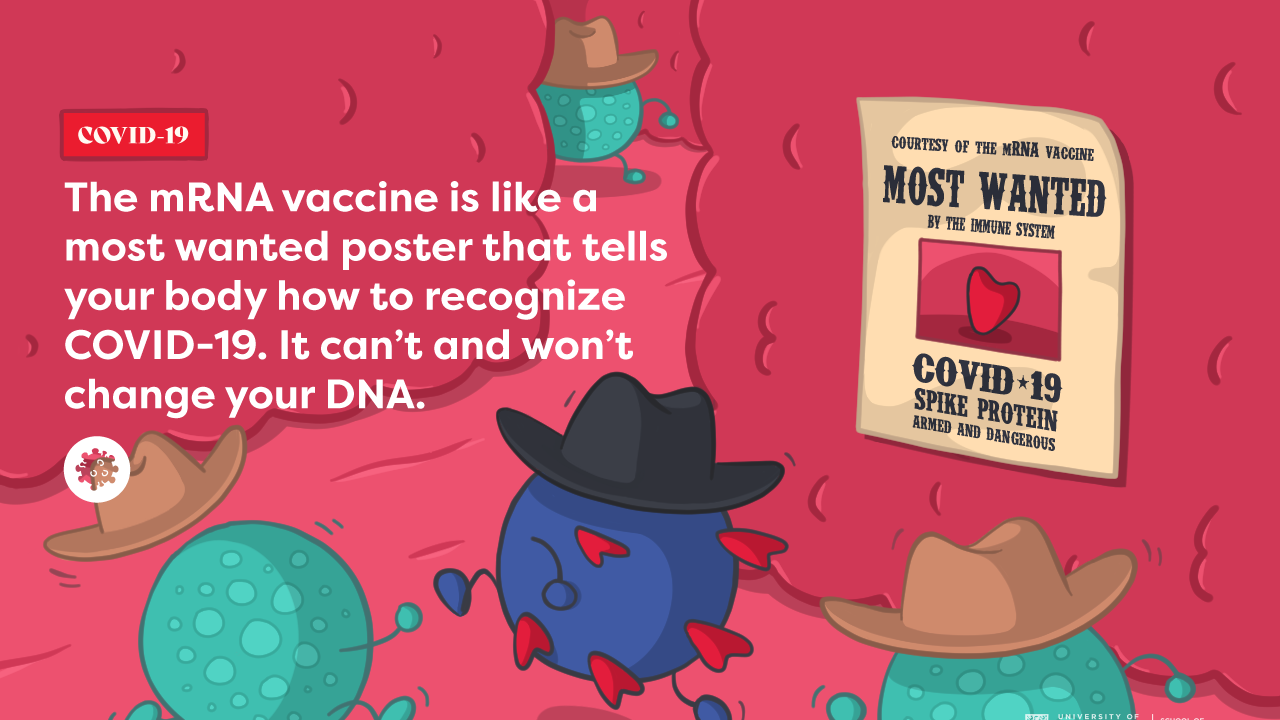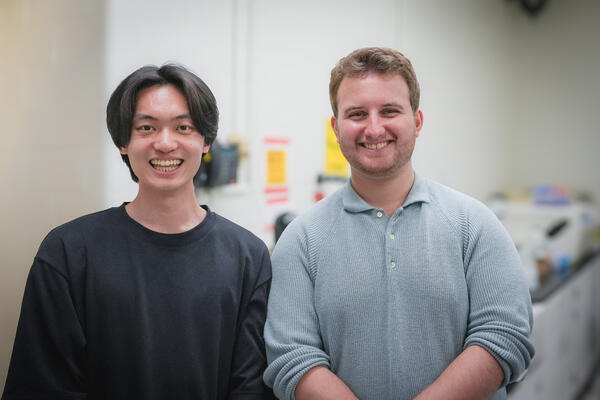Myth: mRNA vaccines change a person’s DNA:
Reality: They don’t. The vaccine has a short amount of code to build the spike protein from the virus. It’s useful to think of the vaccine like a post-it note someone gives you. You see the note, remember it, and throw it out. The note doesn’t change you, it just gives you some information to remember. Similarly, the mRNA vaccine gives the body information to recognize a piece of the virus. The body then gets rid of the note but keeps the memory. When your body sees the virus in the future it’s ready to fight it.
Myth: There are dangerous ingredients in these vaccines:
Reality: These vaccines are generally considered to be “preservative free”. They have the mRNA, which is wrapped in a fatty layer for protection. There is also a common ingredient called polyethylene glycol (PEG) which helps to make the fatty layer, and salts, sugar, and water. There are no blood products, fetal cells, mercury, or formaldehyde.
Myth: The vaccines were developed too quickly:
Reality: We are used to slow vaccine research. The slowness is largely due to delays in funding and in coordinating the various stages of research. COVID vaccine research has been much faster because of incredible cooperation, coordination, and investment around the world. This meant the stages of research were better streamlined, and these factors also allowed for the rapid recruitment of more people into large, well-designed trials. There is also a lot of virus circulating in communities, which meant people who got a placebo vaccine got sick faster than usual. All of these factors sped up the research on mRNA vaccines.
Further, before the pandemic, the mRNA vaccines were already being studied for ebolavirus, zikavirus, cancer, and other illnesses. The technology could be quickly adapted to COVID-19. mRNA vaccines are also much faster to manufacture than traditional vaccines that typically have to be grown in a lab.
Myth: We still need long-term data before we know the vaccines are safe:
Reality: The vaccines are safe — that was one of the main questions answered by the clinical trials. Vaccine side effects usually occur within days of a vaccination, but some rare side effects may occur up to 6 weeks after the vaccination. At the time of approval, both mRNA vaccines had at least 6 weeks of data in most participants. Now, we need data on a much larger group of people to identify any rare side effects that may occur in 1 in a million people. With millions now receiving the vaccine, there have not been any major concerns, but regulators continue to monitor adverse event reporting programs around the world.
We are waiting for some long-term efficacy data, however. While we know the vaccine protects most people in the short term, we still need data to know how long that protection lasts (months or years), and if the vaccine will continue to be effective when the virus mutates. We also need to know if a vaccinated person is exposed, can they be contagious even if they don’t get sick. The ongoing trials will help us answer these questions.










